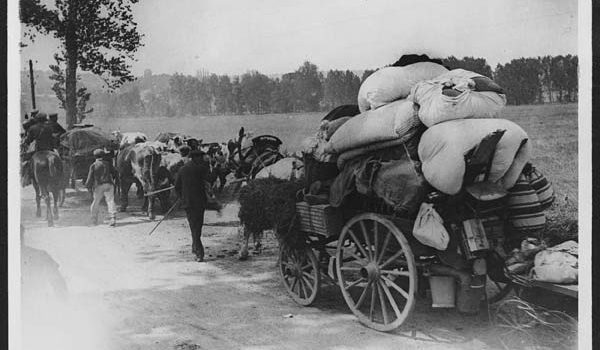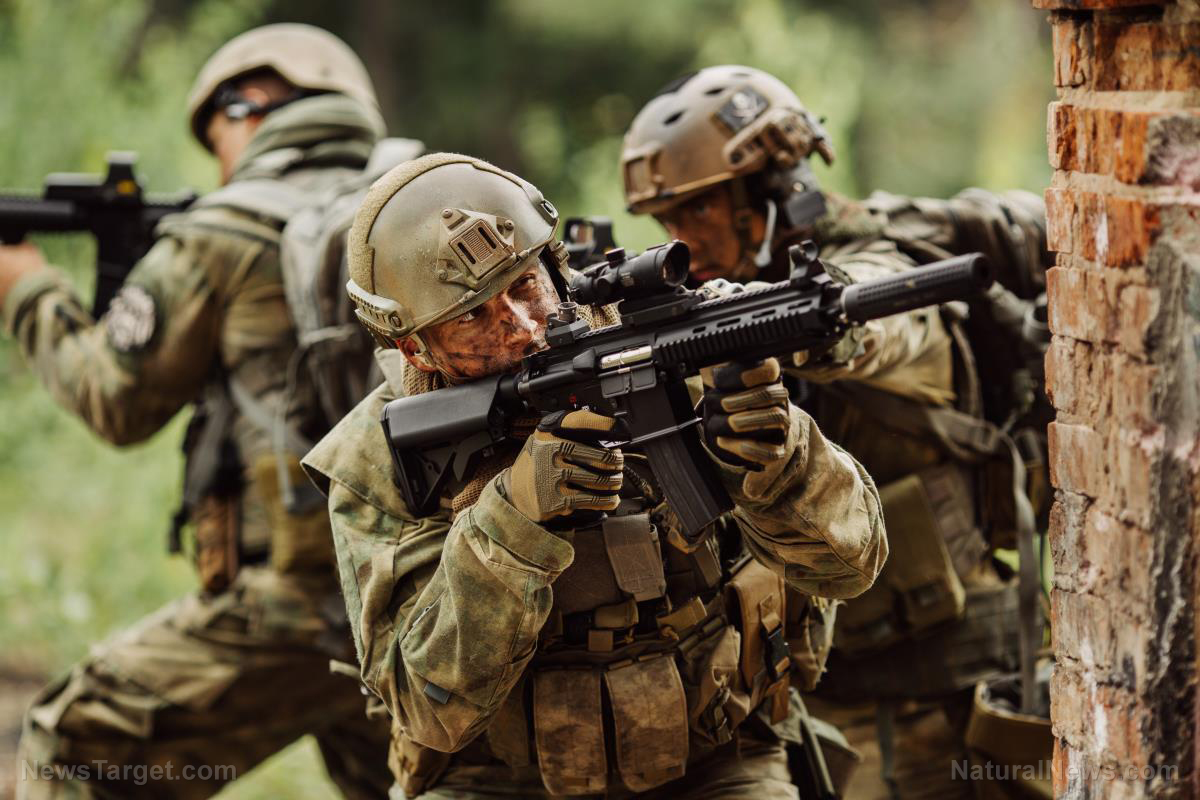Build the Plan vs. Test the Plan – Part 1
by T.R., Survival Blog:

My goal in this article is to detail how to “build the plan” versus “test the plan” for bugout, while having fun.
We regularly read SurvivalBlog and enjoy it immensely. We’ve also read and studied a lot of great books including Lights Out and Patriots. However, a few years ago we realized our learning curve was too slow for the fast-moving risk profile of a civil society becoming more frazzled (coupled with having moved to a hurricane-prone state after my husband’s retirement). We brainstormed how to compress the time required around implementing many of the great ideas from SurvivalBlog and associated books and articles.
Our first thought to accelerate our preparedness path was to better balance table top planning with actual field testing of our plans. We have the checklist of all checklists and we spend time camping but had we really combined the best of both planning and test? Before this latest trip and this essay, the answer was: “Not really.” After our trip and composing this essay, we feel more confident of our survival skills and eager to further improve.
We agreed on a testing scope during a longer than usual personal vacation. We crafted this to mimic certain attributes of off road living we wished to pursue (and in some ways, certain chapters of the novel Patriots written by JWR, but without the dose of civil unrest portion).
Previously, Hurricane Irma gave us a real dose of evacuation reality testing within a year of moving to Florida. That hurricane happened early relative to our really getting settled, thus it was a perfect “real” stress test of our conceptual plan. However, we reflected that if we did everything we wanted to prepare in serial order, we would never get done and quite frankly, we’d be chasing an elusive goal. Neither of us wanted to wish for another Hurricane to see how we did. But we always wanted to visit more National Parks and eventually visit the majority of them having already spent time walking through museums in Rome and trying to stay awake. We were tired of international travel and liked the idea of spending our discretionary dollars in the USA.
A few years back, we built a multiyear plan covering basic scenario around where we are at a given time and what resources we have to avail ourselves at those locations; most of this article covers testing one specific scenario. (One of our four likely scenarios covering the vast majority of our time).
As background, our multiyear plan, in turn, shaped a few thought-provoking principles relative to where we were leaning previously to our self-assessment.
1. We want to be surrounded sparsely by like-minded people and our move to semi-rural Florida from the Northeast facilitated that.
2. We did not happen to become familiar with the benefits of Idaho, for example before we moved to Florida, just getting that out there in advance. It’s possible that we might try something out West but for now, our location works pretty well.
3. We have limited time, like all of us humans. Only 24 hours in a day. But we realized that if we treat our vacations and a majority of our weekends like a training mission or weekend drill (and somehow enjoy that at same time), that we could both have fun and practice our craft of being prepared and learning new things to boot. I continue to have a job which I enjoy. Although my husband is retired military, for now, we have certain time constraints. That being said, we do assert that time constraints should not be obstacles to preparedness if we deem that to be of prime importance for our family.
4. We did not see the merits of waiting until we fully retired via the so called “when we have the time” plan. Hence, we crafted the first several drafts of our survival plans in our early 50’s; we are now 5-to-6 years into various editions of those first plans. We changed our priorities to “find that time now” or at least a large block of that time at frequent intervals during each year.
5. We enjoy family and friends very much. However we decided instead of eating out, rushed birthday celebrations that might land during the week and/or habitually attending frequent but short social gatherings filled with inconsequential conversations (either because of interlopers present, or due to time constraints, or both), we decided we would be better off vacationing without distractions and/or spending discretionary weekend time with friends over less frequent but longer blocks of time at one stint and doing this in the form of a serious camping trip or other training type of event with friends and family. These longer time blocks made the conversations and social interactions more meaningful as well.
REDEEMING SOME WASTED TIME
At a family meeting we discussed that if each person spends screen time of two hours a day, that yields a wasted two months a year that can be potentially repurposed. We measured most of out time as a baseline; all of us in the family (husband, grown children and their significant others) came up well over that two-hour cut off line (per 24-hour day) which converts to the corresponding two months per year. Ultimately, we hashed out a one-hour screen time limit (to research worthy items, keep up with current events, read history and useful fiction, pay bills and required admin all fit into that one-hour time clock.)
We agreed this other “one month of saved time” could be much better spent intellectually and physically and economically by improving our preparedness and health while having more fun to boot. We conceptually agreed that reading a real book albeit in electronic form (such as a personal device) would not count towards “screen time”; as a side note, this exception made it harder to track screen time and control it. That being said, we were striving for awareness and improvement of time allocations rather than brute enforcement of a concept. To summarize, combining the screen time limit and dual purposing our social time along with using our vacations as field testing over the past three years has given us way more than enough “time” to significantly accelerate our preparedness, and advance our ability to measure our performance using logs and some manual tools to document what worked or did not work.
Relative to our field test, for this year we decided to test our planning whilst taking a longer than usual vacation; essentially, mirroring a small part of Patriots in our own way albeit without the civil strife part of things and with sharp focus on the daily living part of things (packing, cooking, cleaning, wilderness craftwork, clothing, fitness and hiking as the basics). This essay is about that one part of our planning and what we learned. A few of the lessons learned included are for humor, mostly to poke fun of myself and to thank my husband for his patience. Some of the sentences are for illustrative purposes more than a declarative preference such as “oatmeal versus pancakes”.
A DESIRED LEVEL OF CONVERSATION
We took even the smallest decisions and applied a technical filter of attributes to determine which approach or choice was better for us. I won’t advocate that this is better for everyone, rather it’s the principle which we espouse. Oatmeal seems to stick to our ribs more and last longer before another meal. Pancakes seemed to generate hunger quickly afterwards, although blueberry pancakes always sounded better. Oatmeal always sounded bland to our camping friends until we served it with chopped walnuts, raisins and a sprinkle of cinnamon. Oatmeal can be made in a large communal pot and has one pot clean up plus serving mugs. For us, pancakes take a more exacting grill surface, use more fuel to cook, aren’t as scalable for larger groups of people and get cold faster once they come off the griddle especially at high altitude. Oatmeal in our eating mug stays hotter longer, and also lends itself to being customized by adding toppings (coconut, almonds, honey). It’s that level of conversation we were hoping to pursue; consider “oatmeal versus pancakes” as a metaphor for much harder topics around your choice of a hunting gauge gun or what you might keep in your EDC bag versus what gets added into your 72-hour bag. It’s all of these details and more that we were hoping to pursue in this combined field test and summer vacation.
FOUR BASIC TYPES OF PLANS
So, here’s our starting point. We have our bug out bag(s) packed, and our family style rubric covering four basic types of plans:
Loading...



